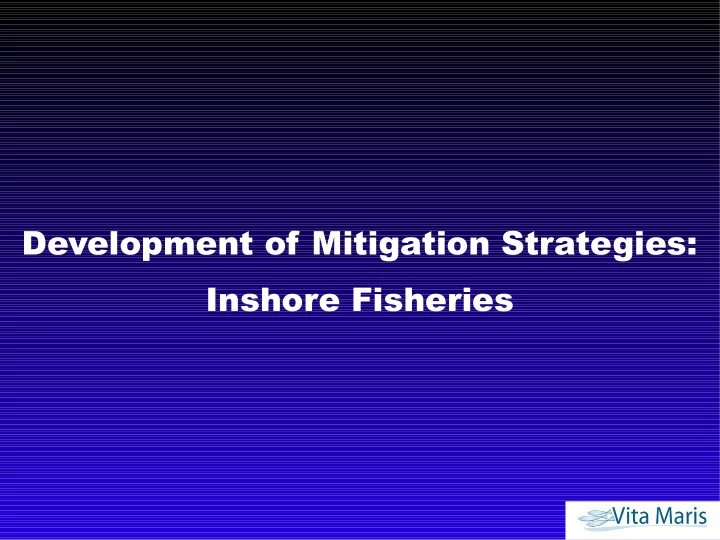

Development of Mitigation Strategies: Inshore Fisheries
Objectives To work with inshore fishers to improve awareness and understanding of protected species interactions with inshore fisheries. To identify characteristics of inshore fisheries that may influence the likelihood of protected species interactions. To assess current use of mitigation measures, and work with fishers to develop, test, and implement measures for mitigating protected species interactions
Focus on Bottom lining - Ports Visited Monganui Hohora Effort (days) Opua and Russel 0 Tutukaka Whangarei / Marsden 10 Warkworth Leigh Auckland FMA1 50 Coromandel Whitianga Tauranga 200 1000 Lyttelton
Meeting Skippers Participation Recorded gear variables Notes on: attitude, mitigation, offal / bycatch / old baits, birds observed, skipper experience, other Handed out bird guides – explained different species, their different behaviour and threat classification
Gear types Three groups – Clip on snapper – Clip on bluenose / ling – Autoliners
Line set ups Weights with suspender ropes and floats Weights only Line above sea bed Line hard on the sea bed Weights and suspenders with separate floats Alternate weights and suspenders Line covering a range of depths Line cov ering a range of depths above sea bed weight snood and hook on backbone intermediate float surface marker float sub-surface float
Characteristics influencing interactions How they fish – Line set up (sink rate = availability of baited hooks) – Bait type – Hook type Where and when they are fishing Mitigation
Mitigation currently in use Night setting (with reduced lighting) Avoiding birds Tori lines Oil Line weighting
Line sink rate testing Measure the availability of hooks for the type of gear used by inshore fleet Provides definite results from minimal sea time – no need to look at interactions / captures or a proxy for captures Employ Time Depth Recorders (TDRs)
Methods Testing TDR performance Measuring sink rate of longlines – Pre program TDRs – Clip on to line during shot – Record clip on time and water entry time – Retrieve TDR and download data
Positioning TDRs on line Weights with suspender ropes and floats Weights only Line above sea bed Line hard on the sea bed Alternate weights and suspenders Weights and suspenders with floats Line covering a range of depths between weights. Line above sea bed weight TDR sub-surface float snood and hook on backbone
Results – Time depth profile
Results – Different size weights TDR by suspender TDR between suspenders
Sink time to 5m A1 A2 B1 C1 D1 E1 E2 F1 n=15 n=30 n=21 n=33 n=34 n=12 n=8 n=60 vessel / line set up
Sink time 5 - 15m A1 A2 B1 C1 D1 E1 E2 F1 n=15 n=30 n=21 n=33 n=34 n=12 n=8 n=60 vessel / line set up
Distance astern line reaches 5m distance behind vessel (m) A1 A2 B1 C1 D1 E1 E2 F1 n=15 n=30 n=21 n=33 n=34 n=12 n=8 n=60 vessel / line set up
Distance astern line reaches 15m distance behind vessel (m) A1 A2 B1 C1 D1 E1 E2 F1 n=15 n=30 n=21 n=33 n=34 n=12 n=8 n=60 vessel / line set up
Adding more weight (time from 5-15m) vessel / line set up
Recommendations Using regular sized weights gives a more even sink rate – thereby reducing maximum sink times Consider use of suspenders Careful deployment of intermediate surface floats Minimise height of shooting block Consider setting speed with respect to tori line coverage
Where to go from here Feedback to fishers Sink rate testing / increasing sink rate – Bluenose boats Deterrents – Tori lines – Treating baits – Dyeing bait
Recommend
More recommend